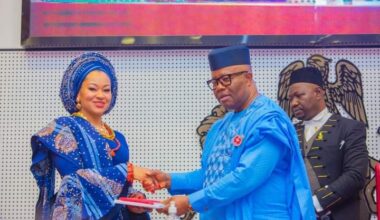By Alex Adeiza

Five years after proscribing the Kogi State University chapter of the Academic Staff Union of Universities, (KSU-ASUU), students have continued to enjoy seamless academic sessions and graduating in time to continue their lives after school. Whereas, their counterparts in many other public universities across the country are currently hopeless, being victims of the ongoing battle of who takes the win between the Federal Government of Nigeria, and the National body of ASUU.
The students are the grass, taking the blow from two elephants, and an end is unknown. For what is worth, the battle between Kogi State Government and KSU-ASUU has not ended, as the case has remained in court for God knows how long it will take. If it tarries longer, it means more sets of students will enjoy their journey in the institution as their counterparts in saner climes.
What is the point of this article? The Federal Government and ASUU are currently at a standstill that shares some semblance with the Yahaya Bello scenario in 2017. The state governments might decide to do what they deem right from this information by taking at least a cue.
The year was 2017, I had just written my final exam as an undergraduate of the Kogi State University, after the state chapter of ASUU headed by Dr. D.O. Aina embarked on an indefinite strike. The struggle started from 2016, but they were considerate enough to let us write exams. Yahaya Bello was barely two years into his first term in office, also struggling with the aftermaths of too many workers’ screening exercises that messed his government up on the long run. The battle held longer than expected, with propaganda, counter-reports and uprisings that heated the polity.
Meanwhile, there we were; students who just graduated with no hope of seeing our results, let alone mobilized for the National Youths Service Corps. We were the most hit.
What were their demands?
Earlier in March 2016, when the union first issued a 21-day ultimatum to the state government, their demands were for the government to pay its members five months’ backlog of salaries, and forthwith ensure that no salary was delayed more than seven days from the end of the preceding month as failure will result in no pay, no work, or face industrial action.
A month after, with no amicable resolution with the government, they embarked on the “no pay, no work” strike. The Governor had invited the union and the then Vice-Chancellor of the varsity, Prof Abdulkadir Suleiman for a resolution. Bello was quoted to have said that despite the backlogs in question were owed by his predecessor; he would not shy away from fixing the liabilities once he accessed the bailout fund. However, the union would not have that.
Three months after the strike, the lecturers considered the students who took to the streets of the state capital to block the Federal roads, but that would just be for a while. By November 2016, the students were greeted by news that the union was going on another indefinite strike as soon as the one week national warning strike of the national body was completed. In the statement announcing the strike, Dr Aina said,
“we expect the Kogi State Government to defray all outstanding salaries of all our members within this period of warning strike to forestall further disruption of academic activities in Kogi State University. The Union will not continue to fold its arms while our members suffer untold hardships in being able to feed, transport and fulfil their statutory obligations. We cry out once more, where is the government that says it should be trusted? Where is the benefit of doubt?”
He also added that part of the problems the institution was facing was due to the refusal of the governor to constitute the University’s Governing Council since his assumption, hence hampering functioning of the system.
The Proscription
The strike lingered on for longer than expected, neither of the fighters bowing to the demands of the other. NGOs, journalists and so many other bodies spoke to the situation, students used the street protest technique again, but it had already become a battle of who takes the day. The union was even more resolute this time, as they decried more damages to their payments.
For them,
“divided we beg, united we bargain; injury to one is injury to all; a pregnant woman needs to give the necessary push to deliver the baby.”
July 2017, after the strike had run into about seven months, the Governor in an emergency State Executive Committee Meeting announced the proscription of ASUU with immediate effect. He said the decision became necessary as all efforts to make members of the institution see reasons to call of their strike had failed.
According to him,
“as a government, we have fulfilled over 90% of their demand and have even gone a step further to pay all outstanding salaries of both cleared and unclear staff including those that have committed one crime or the other.” Bello went further to accuse the union of behaving like a political opposition party in the state. “Apparently, there are certain forces from certain areas that were pushing. However, that wouldn’t be my concern.”
Reacting to the proscription, the union said the Governor had not legal standing to proscribe them, stating that only the National Assembly can validly make any pronouncement on labour matters. To the then Zonal Coordinator of the union, Professor U.D. Ikoni, Bello was an “adolescent governor” whose threats “amounts to empty noise and nothing else.” The union vowed to continue the strike.
The Division
Just barely a month after the ban on ASUU, the university lecturers became divided. While academic activities picked up in some departments across faculties, other departments were held bound by those loyal to the union – the rebelling forces whom were no longer allowed to hold their meetings in the campus.
Putting his threats to action, the governor had directed that all lecturers who did not resume immediately after the proscription should be deemed as having resigned their employments, and be treated accordingly. An advertorial was placed by the management of the school, announcing the commencement of recruitment of new lecturers to replace the ones on strike. That was it.
The Consequences
Most definitely, there were bound to be consequences, but when compared with the sufferings of the students as at then, they were more bearable. For instance, the lecturers (about 135 of them) who stuck with the union went away with the final exams’ scripts of thousands of students, hence making it difficult for the computation of results and mobilization of these students who had outstayed themselves at home for NYSC. Also, it took the university some time to restore the system back to normal.
ASUU took the state government to court. By November 2017, the union accused the governor for allegedly refusing to reinstate the 135 sacked lecturers of the university, stating that the government must obey the court judgment as failure to do such was a violation of the rule of law. Not succeeding there, the union secured the services of Human Rights lawyer, Femi Falana and headed to Industrial Court.
The last that was heard was two months ago when the court admitted a total of 345 exhibits in a suit by 114 members (comprising six professors) of the union challenging their unlawful sack by Kogi State university. The suit sought the court to declare the sack of the lecturers illegal, null and void, and also prayed an order for payment of all salary arrears and allowances of the lecturers.
Thus, nobody knows where all these would end. What is known is that the institution and her students have enjoyed every academic session since then till whenever this ends; and that the Governor is almost drawing the curtains of his second term in office. This means the tendency of leaving the consequences of an unfavourable judgment (if any) from the case to his successor.


